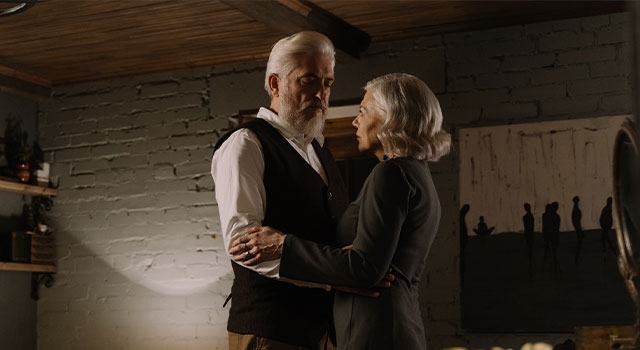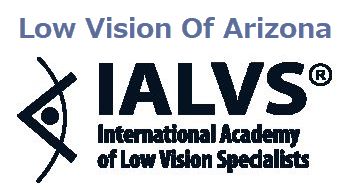
Low vision doesn’t mean blindness. It simply means that a portion of your vision is impaired, and you can continue to enjoy a high degree of independence thanks to low vision tools and devices.
What Is Low Vision?
People often confuse the terms ‘visual impairment,’ ‘low vision,’ or ‘blindness’. Below we'll untangle that and bring some clarity to each term:
Visual impairment is a broad term that refers to any loss of vision. The following are some of the terms used to characterize different types of vision impairment:
- Low vision is defined as fully corrected vision that is insufficient or interferes with your ability to do the things you want to be able to do. It has nothing to do with your visual acuity, field of view or other visual functions like dark adaptation or contrast sensitivity.
- Legally blind refers to vision that is 20/200 or less in your better eye that cannot be corrected with standard glasses or contacts, or a visual field of 20 degrees or less. Certain conditions, like glaucoma, cataracts, diabetic retinopathy, and macular degeneration can cause one to be legally blind.
- Total blindness is defined as the complete lack of form and light perception that often results due to a genetic condition, disease, or injury.
- Partial vision refers to the capacity to see only a portion of your visual field, or to have good central vision but poor peripheral vision. A brain tumor, brain injury, or an eye condition are the most common causes.
Does Low Vision Mean Blindness?
No. Vision loss that cannot be corrected with glasses, contact lenses or surgery is known as low vision. However, because some vision remains, it is not considered to be blindness. A person with low vision may have blurred vision, blind spots or have poor night vision.
Common Types of Low Vision
Loss of central vision
A blur or blind spot in the center of what you're looking at occurs from a loss of central vision. This makes it difficult to read, recognize people and identify features at a distance. A person's side (peripheral) vision is mostly unaffected by the loss of central vision.
As long as the person has adequate side vision, mobility is still possible.
Loss of peripheral (side) vision
Peripheral vision loss leaves a person with remaining central vision, allowing them to see straight ahead, read, watch TV and recognize faces. This is referred to as tunnel vision and can be caused by glaucoma, a brain tumor or injury.
Peripheral vision loss makes it difficult to differentiate objects on one or both sides, as well as items directly above and below eye level. Mobility is often hindered by a loss of peripheral vision.
Blurred vision
Blurred vision causes both near and far vision to be out of focus. When blurred vision is caused by refractive error, glasses, contact lenses and sometimes surgery can clear it up. However, certain conditions may cause blurred vision that cannot be corrected, such as macular degeneration, cataracts and diabetic edema.
Reduced contrast sensitivity
People with poor contrast sensitivity struggle to distinguish an object from other objects having the same background color/shade. For example, a person wearing gray clothing would be difficult to see on a cloudy day. Similarly, finding a blue wallet in a blue purse can be difficult for those with reduced contrast sensitivity. Others may find driving difficult even if their “acuity” is good because visual acuity is measured on high contrast charts. The most common eye diseases that cause contrast sensitivity loss include macular degeneration and cataracts.
Glare/light sensitivity
There are two types of glare: discomfort glare and disability glare.
Patients with discomfort glare tend to feel discomfort in the presence of sunlight, incandescent lights, fluorescent lights, and halogen lights, like those used in car headlights. Glare can emanate from many sources, such as reflection from water, fresh snow or white sand.
Those with disability glare cannot function in these lighting conditions, posing a danger of being in harm's way.
Both types of glare can be helped by a Low Vision of Arizona low vision eye doctor.
Night blindness
People with night blindness find it difficult to see outside at night or in dimly lit indoor settings.
How Low Vision Devices Can Help
People with low vision can often live and work independently thanks to a number of tools and devices that can greatly improve their quality of life.
Our low vision optometrist prescribes all types of low vision glasses and devices, such as:
- bioptic and full diameter telescope glasses
- microscope glasses
- prism glasses
- and filters of all types
- as well as a wide range of low vision aids ranging from hand-held magnifiers to electronic visual aids.
Large-type books, magazines, and newspapers, as well as books on tape, talking wristwatches, self-threading needles and other products can also help those with low vision.
Live your best life by contacting Low Vision of Arizona to book a low vision evaluation and to determine the optimal low vision devices for your needs and lifestyle.
Q: What is a low vision evaluation?
- A: A low vision evaluation includes components that are not usually part of a standard eye exam. Your vision will be evaluated to assess the nature and level of vision loss and how it's affecting your ability to do the things you want to do. The evaluation will help determine which types of low vision glasses and devices to prescribe for improved function, safety and independence.
Q: What causes low vision?
- A: Traumatic brain and eye injuries, as well as congenital conditions and issues of aging and uncorrected refractive errors, are all common causes of low vision. As you age, you're more likely to develop various eye conditions, like cataracts, glaucoma, diabetes and age-related macular degeneration. When treated early, vision loss can be prevented or limited. However, left untreated, some of these conditions can eventually lead to severe vision loss or even total blindness.
Low Vision of Arizona provides low vision management, aids and devices to patients from Gilbert, Mesa, Phoenix, and Chandler, Arizona and surrounding communities.
